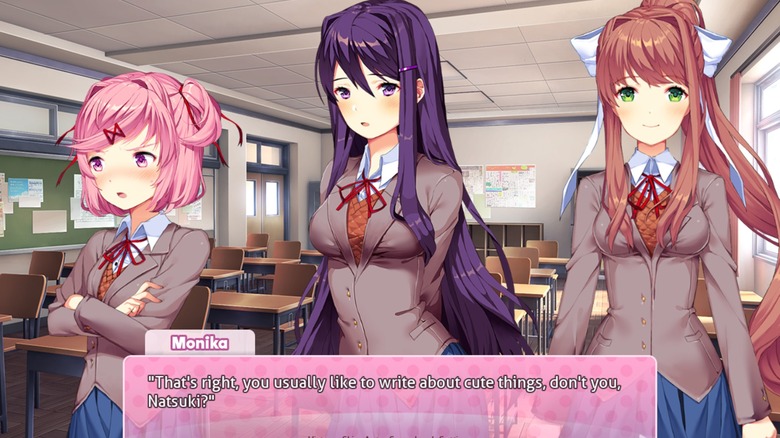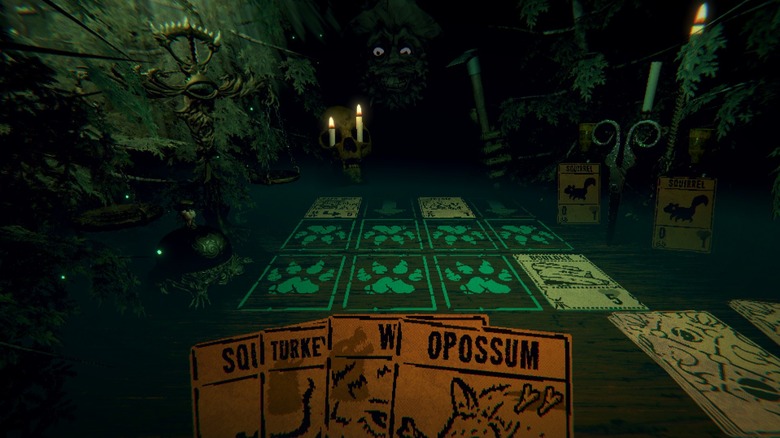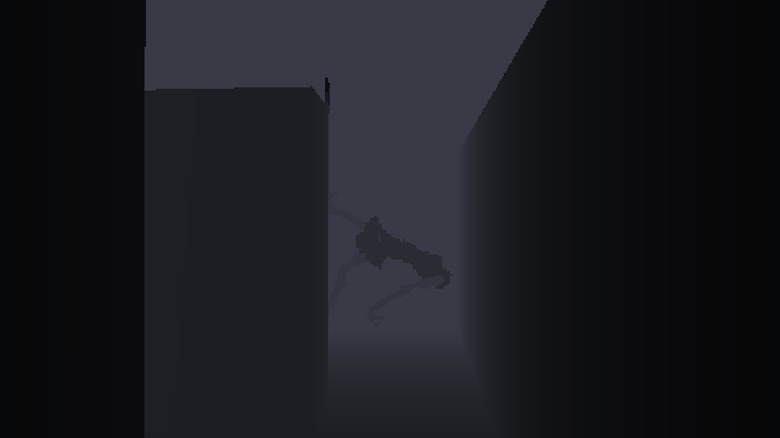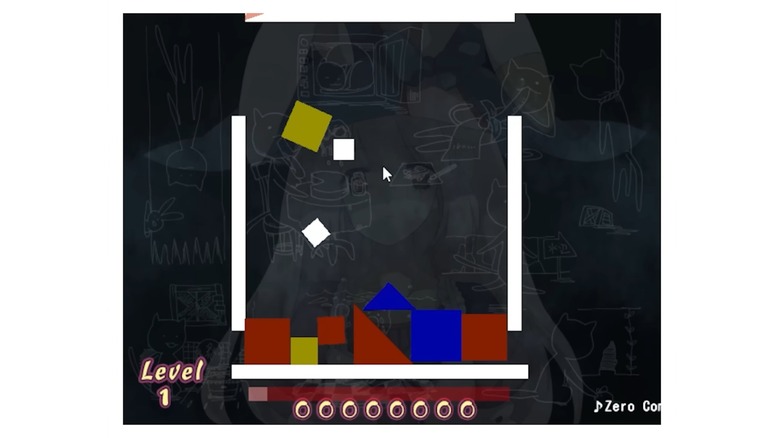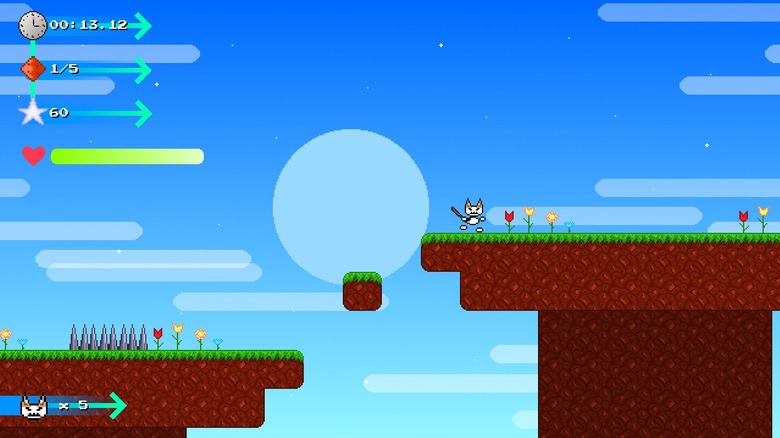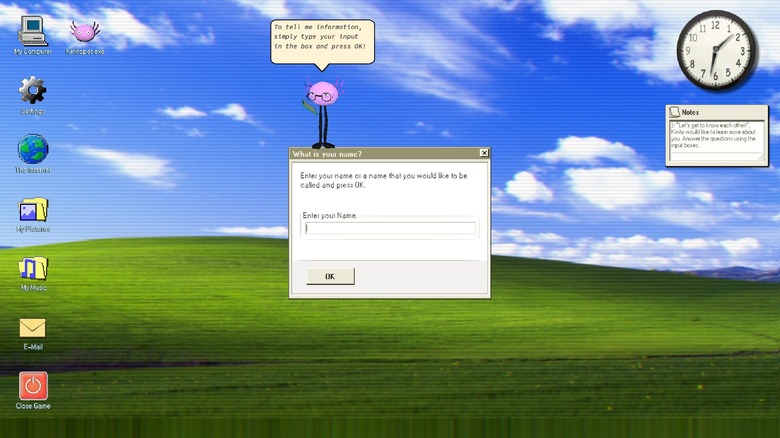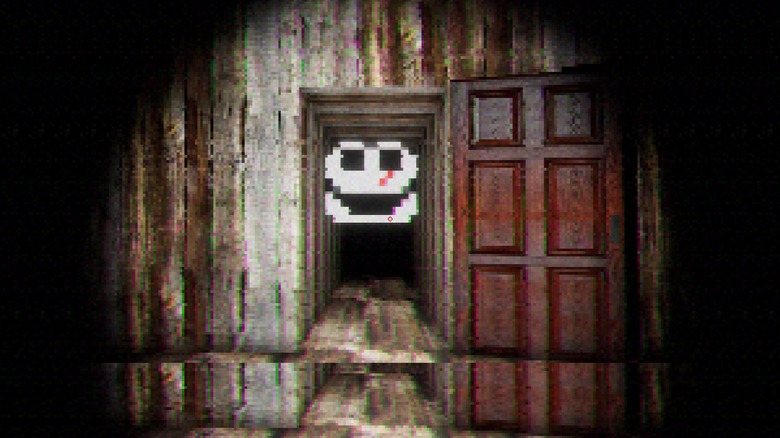7 Video Games That Act Like Viruses
Video game studios throw around the word "immersion" a lot, and it can mean different things. Many video games use mechanics and systems to "immerse" players, and draw them into an expansive or cohesive world ("Red Dead Redemption 2" and "The Witcher 3: Wild Hunt" come to mind). But at the end of the day, they're still video games, and you aren't likely to forget that. Unless one breaks the fourth wall.
The "fourth wall" is the metaphysical wall that separates reality from fiction, named after the three walls of a stage set used for plays, movies, and tv — the edge of the stage or the screen is the "fourth wall." Any time a piece of media acknowledges it is fictional, it breaks the fourth wall. In movies and shows, characters often address the audience, but video games are more complex. Video games most often break the fourth wall by "misbehaving." A game can intentionally insert "glitches" or, if it was designed for PCs, start acting like a computer virus. They can root through your files like spyware, mess with your desktop like worms, and even control your mouse like backdoor trojans.
Don't worry, all the games we're about to cover are safe to play — so long as you install them from official sites. However, some are so good at simulating viruses that they may fool not only you, but also antivirus programs. Warning: Each entry includes spoilers for its associated game.
Doki Doki Literature Club
Most horror games wear their tricks on their sleeves. For instance, advertisements for "The Medium" revolved around the title's gimmick of rendering two worlds at once, showing players both a dilapidated (but still normal) real world and a haunted underworld filled with evil spirits. However, some horror games are scary in more ways than one.
"Doki Doki Literature Club" initially looks and acts like your standard anime visual novel, and that's by design. You take the role of a nameless, faceless student who joins their school's Literature Club, full of cute anime girls. As you play, you make poems, get to know the girls, and...come across their mutilated corpses. Yea, that "psychological horror" tag isn't there by accident. And it's only the tip of the iceberg.
The plot twist of "Doki Doki Literature Club" is that one of the characters "knows" they are in a video game and has gained enough sentience to alter the game's files and even delete them. Unlike other games that break the fourth wall, this is no mere theatrical device; the game actually rips a page out of the malware behavior handbook and deletes its own data. Why? To tell you how to finish the game. That is the extent of virus behavior in "Doki Doki Literature Club." If you are playing by yourself, anyway. The game is also constantly scanning your computer for active streaming software, so if you play in front of a virtual audience, you and your viewers will witness a unique jumpscare. Small, but effective.
Inscryption
Many developers stick to their guns. Supermassive Games, for instance, went all-in on the virtual "choose your own adventure" horror experience after the studio hit it big with "Until Dawn." Likewise, Daniel Mullins Games makes horror experiences that break the fourth wall, some more than others.
"Inscryption" starts as a card game/escape room/roguelike hybrid. You must defeat a mysterious entity who challenges you to a series of card-based battles, and loss is a necessary part of progression. However, that's only the first act. Afterward, the game shows its hand (pun intended) as a trip down the fourth wall-breaking rabbit hole, complete with in-game entities who know they're in a game and are vying for control. However, not all of these characters are as creative and capable as they would like to admit, which is where the virus-like behavior comes into play.
Each boss in "Inscryption" has a unique gimmick, but most stay within the confines of their game mechanics. During the third act, when the aforementioned uncreative entity assumes control, you need to face bosses that use your own computer against you. Kind of. Using malware-mirroring systems, one boss can scan your hard drive and turn files into a card — the bigger, the better — and if one of the cards is defeated, the game deletes the associated file. Another boss gains access to your Steam account and transforms your Steam friends into cards you have to fight, custom icons and all. It's tame compared to other games, but it throws the unprepared for a loop.
ImScared
What makes a good horror game? Unsettling atmosphere, creepy music, and a tense but fair challenge. Visual fidelity doesn't always matter as much as you think. Heavy pixelation can surprisingly elevate a title if it has the right art style. Just look at games such as "Darkwood," or the focus of this entry, "ImScared."
"ImScared" is the poster child of games that decimate the fourth wall by acting like a virus. This is a first-person horror experience that focuses on solving puzzles, many of which force you to figuratively and literally think outside the box. Furthermore, "ImScared" uses heavily pixelated graphics and crunchy audio to unnerve players. That, and virus-like behavior so effective it can even fool antivirus software.
Throughout the course of playing "ImScared," the game will constantly try to mess with you by reaching through the fourth wall. It will crash itself and produce blue screens of death (well, fake ones anyway) to make you think your computer is malfunctioning. "ImScared" will even create fraudulent Steam achievements; sometimes to scare you, sometimes to guide you. And we can't forget the title's bread and butter and most common malware behavior: Inserting files into its own game folder. These actions are limited to its own portion of the hard drive, but it still goes that extra mile to sell the idea that the game is a semi-sentient digital entity. Oh, and these messages hold the solutions to many in-game puzzles. Just bite the bullet whenever you see them.
Irisu Syndrome
There's always a first time for everything. There was a world's first horror game, a world's first computer virus, and a world's first video game that used virus-like capabilities to scare players. Compared to subsequent titles it's downright tame, but you need to remember that nobody had seen a game behave like a virus before this one.
Unlike other entries in this article, "Irisu Syndrome" starts as a simple puzzle game. You just match blocks of the same color and try to achieve a high score. As you continue, the title will tell a dark story about three teenagers stalked by an unseen force during a summer vacation. The story goes deeper (and gets a bit crazier) if you frequently check the game's folder, as "Irisu Syndrome" will occasionally add new text files. This is the same virus-like tomfoolery some subsequent titles mimic, but it is far from the only trick up the game's sleeve.
Even though "Irisu Syndrome" is a puzzle game, it has two endings that are determined by your scores. If you only do ok, the game ends on an ominous tone that implies Irisu (the bunny-themed witch seen throughout the game) murdered the three teenagers. If you do exceptionally well, a different cutscene will play, and all the while, a png of Irisu holding a bloody, nail-studded bat floats across your actual desktop and into the game window...and then throws a birthday party. It's creepy and simple, but it only scratched the surface of how video games could simulate viruses.
Catto Boi
One can't help but wonder what goes through the minds of developers who give their games virus-like attributes. Why did they do it? Perhaps they only wanted to give audiences a good, unique scare. Or in one case, they did it to impress a content creator they like.
"Catto Boi" is a collection of simple and seemingly cutesy 2D platformers that all star the titular Catto Boi, created by mango-ki initially for a creepypasta game jam challenge run by LuigiKid Gaming. The gimmick, of course, was that the further LuigiKid Gaming progressed, the more "Catto Boi" would "glitch." The game would flash creepy unrelated images, blare loud sounds, and bounce the game window around. Typical behavior for .exe games (games that are inspired by creepypasta stories).
As mango-ki refined their craft and made more "Catto Boi" titles, they distanced themselves from .exe game tropes and focused more on making it seem like "Catto Boi" was infecting your computer with malicious payloads. Like with the original game, these "attacks" only crop up the further you progress, but they are much more realistic. A few of these virus-like actions include posting fake error messages and addressing you with your computer account name, changing its own desktop icon, opening an unclosable window, and most devious of all, spawning a fake Fatal_KERNEL_ERROR. Tricking players that a game bricked a computer is bound to give plenty of people a heart attack.
KinitoPET
There's no such thing as an original idea anymore. Everything we come up with is based on something else. Even the legendary "Star Wars" was loosely inspired by Akira Kurosawa's "The Hidden Fortress," and who knows what that semi-hypothetical horror-themed "Star Wars" project will draw from. However, when a developer creates a game that mimics virus behavior, their muses tend to be less benign.
If you have been on the internet for long enough, you might realize that "KinitoPET" was clearly inspired by BonziBuddy, a malicious piece of spyware disguised as a helpful desktop assistant. "KinitoPET" creates a virtual desktop you can mess around on and surf the "web" to simulate the BonziBuddy experience, complete with the fear that your computer has a virus. Only this time, the threat is more in your face but completely simulated.
While "KinitoPET" creates a virtual desktop, it does so by scanning your entire computer. The documents on the game's desktop? The documents on your actual PC. The virtual desktop's wallpaper? Your actual computer wallpaper, just more pixelated. But the real virus-like behaviors and scares don't come until later. The game can scan your Steam account for games and usernames, open your actual Paint app and write a personal message with your computer account name, increase your speaker volume, and scariest of all, display your actual home address. It's all for the sake of a good scare, but it works.
A Dark Place
Just like how no two viral payloads act the same way, no two games simulate malware behavior identically. Many titles limit the impact of their activities to their own files or Steam, but sometimes a game will go above and beyond to mimic a viral attack.
The game "A Dark Place" starts off as a simple, horror-themed experience where you hunt for keys in a surreal environment while dodging an evil train with a pixelated frog face. In these early stages, "A Dark Place" features a somewhat novel mechanic of listening for the train before you open doors, lest it run you over. The tasks don't get any more complicated or scary, but "A Dark Place" lets its malware-like payloads do most of the talking and scaring.
And this game get's super aggressive with its virus-like activities, basically twisting your computer to its own ends. While it won't steal your personal information, it will pull just about every other trick in the book. It will open your disc drive if your computer has one, make it look like your monitor's pixels are melting, rename computer folders, hijack your cursor, and change your desktop wallpaper. Oh, and we can't forget the classic trick of threatening to reformat your entire hard drive. "A Dark Place" doesn't, but with all the other stunts the game pulls, we won't blame you if you get scared when it makes that bluff.

